Don’t Be Fooled by the Name—Why ‘Animal Haven’ Zoo Is a Hellhole
Animal Haven Zoo—a roadside zoo in Weyauwega, Wisconsin—continues to rack up citation after citation from the U.S. Department of Agriculture (USDA) for violations of the federal Animal Welfare Act (AWA). In fact, this shoddy facility has been cited more than 25 times in just over two years for violations that could cause suffering to animals and jeopardize their welfare, including failing to provide numerous animals with adequate veterinary care and failing to maintain enclosures in good repair to protect animals from injury and safely contain them, allowing an arctic fox and a lemur to escape.
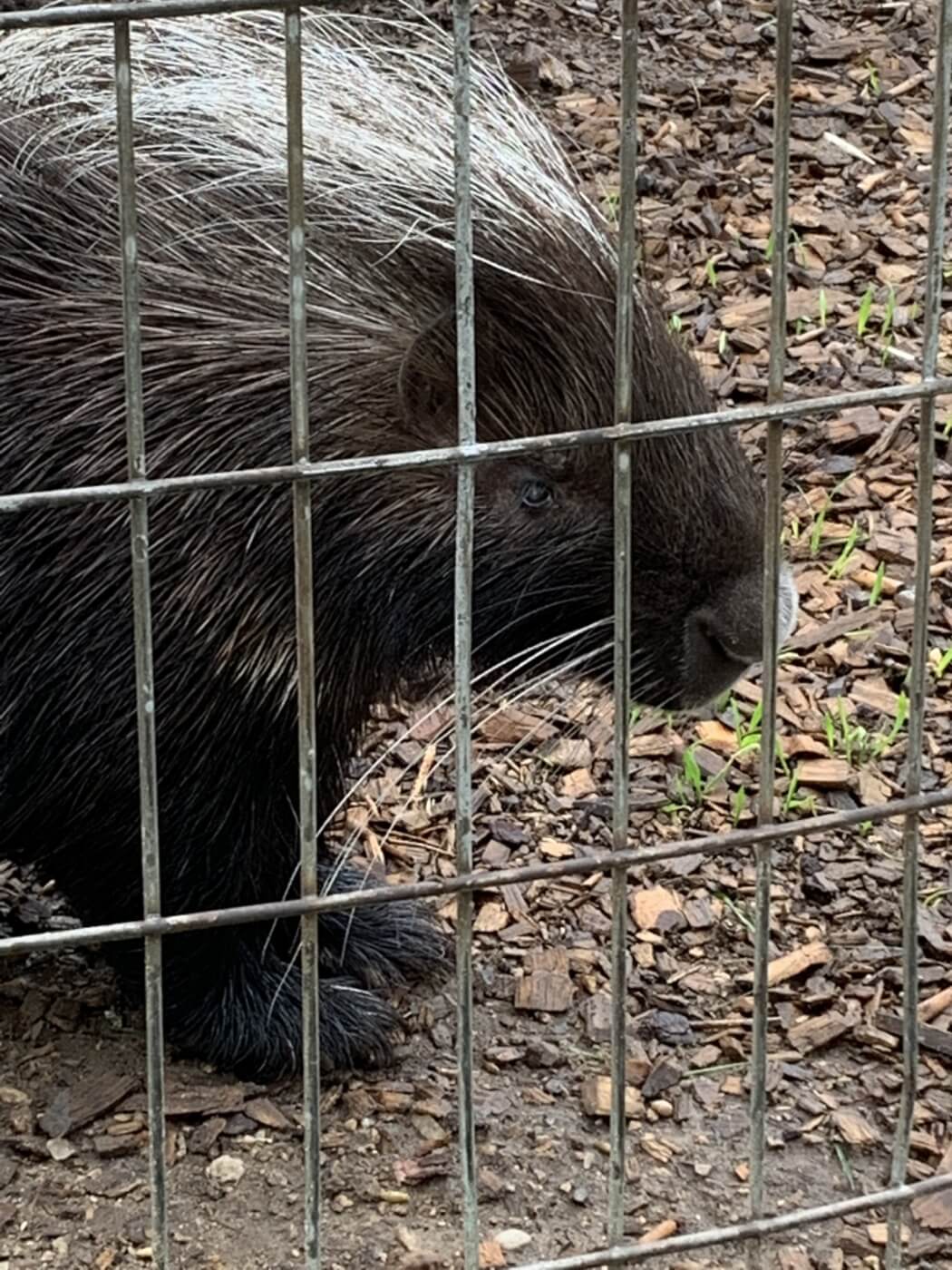
On February 23, 2022, the USDA slapped Animal Haven Zoo with a $6,450 penalty for eight alleged violations of the AWA that took place between November 2020 and November 2021, including one for failing to properly repair a hole, resulting in the escape of four prairie dogs—three of whom remained unaccounted for—and another for transporting a newborn tiger cub to a local school, where he was passed around to children like a toy, exposing him to potential disease, infection, and stress. The USDA only issues penalties like this for egregious animal welfare violations, securing Animal Haven Zoo’s place among the worst of the worst.
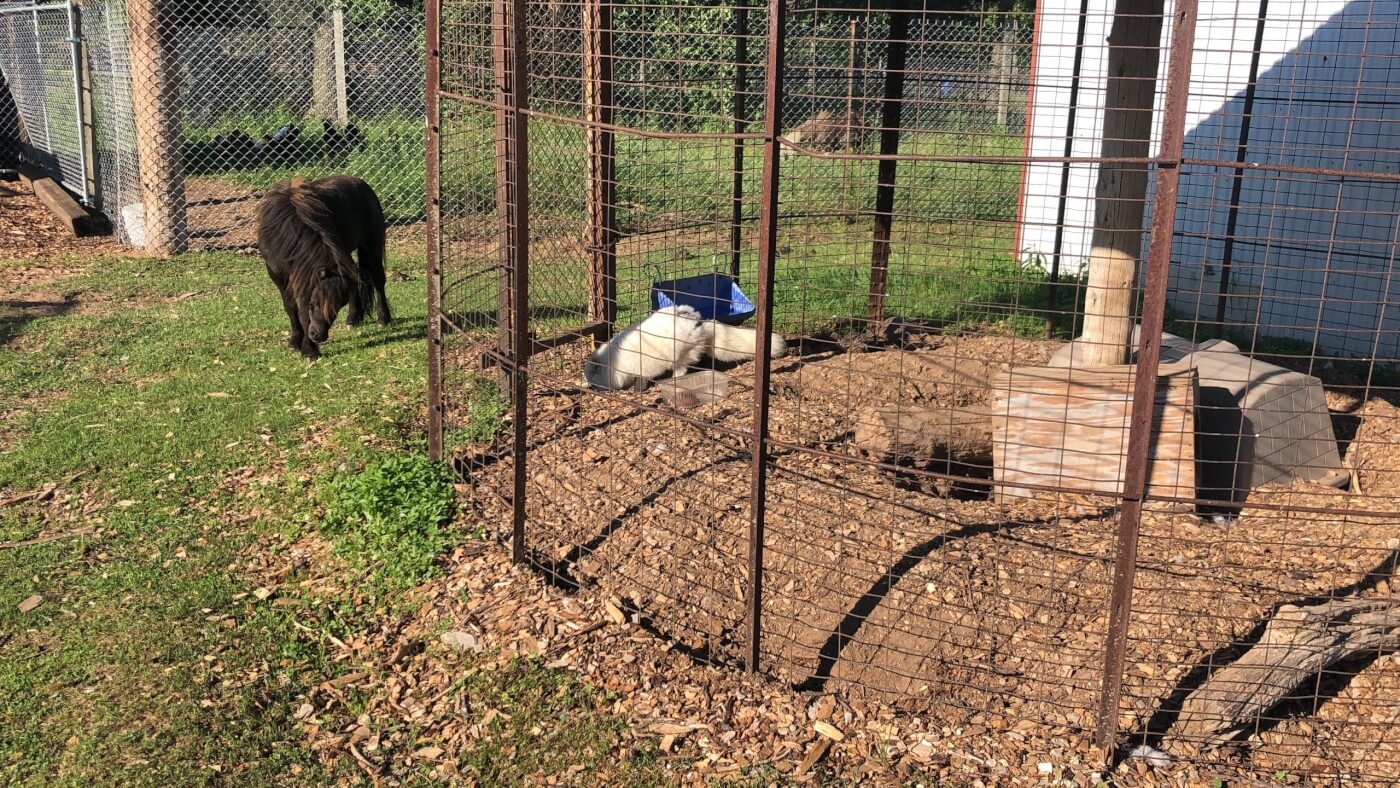
Just how bad is Animal Haven Zoo? The feds have cited it for a number of troubling animal welfare concerns, including its glaring failures to do the following:
- Provide adequate veterinary care to numerous sick or injured animals, including a rabbit with eye and ear discharge and missing hair on the back left foot, a rabbit with a scab and missing hair on the nose, a pig whose tusk was growing into his cheek, a porcupine with eye discharge and cloudy eyes, a goat with an abnormally growing rear hoof, a sheep with a lump on the left side of his or her face, an alpaca with overgrown front nails, and a lamb who was thin, was weak while walking, and had signs of the scours
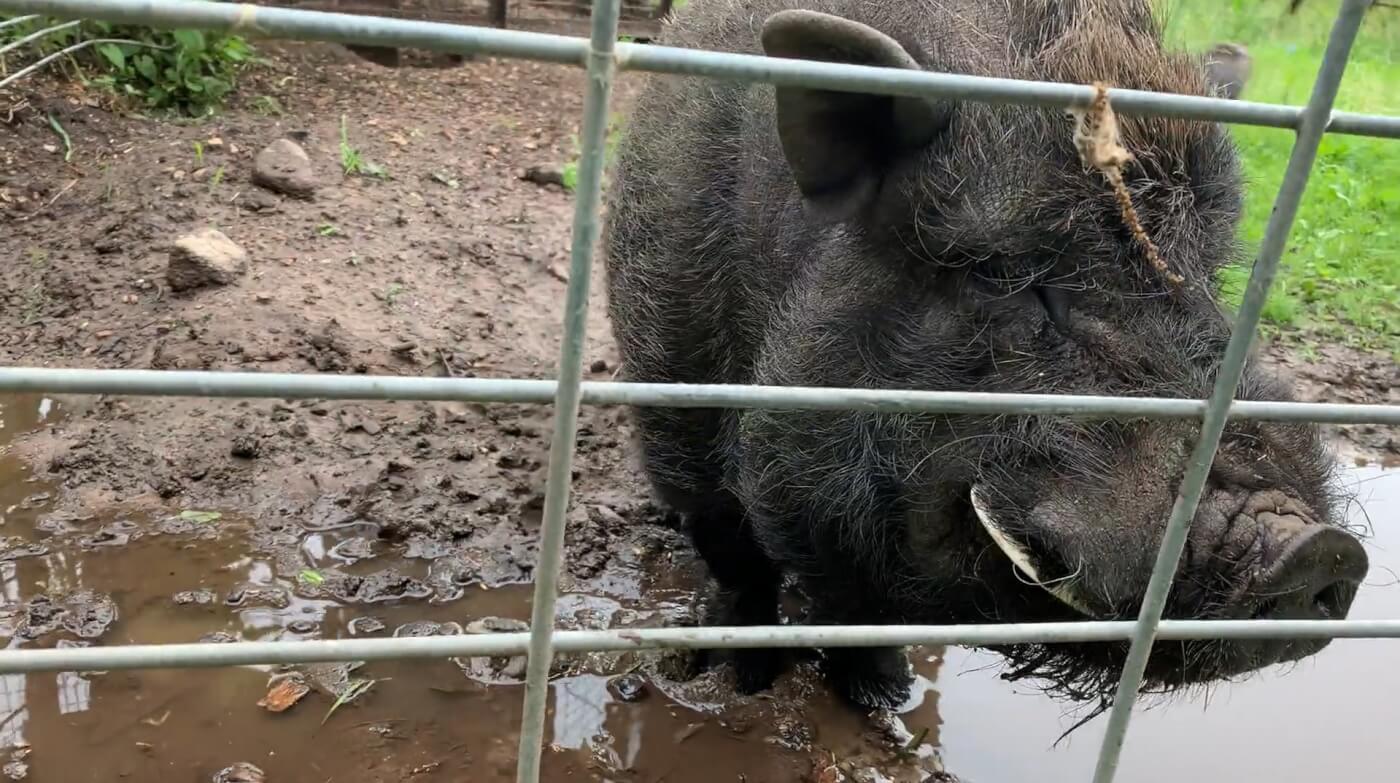
- Provide a liger with water for about 20 hours (When given water during the inspection, this animal drank for over four minutes.)
- Provide numerous animals with adequate shelter from the elements, including five bison, three female aoudads (Barbary sheep), and a group of nine rabbits who also lacked sufficient shade
- Ensure adequate drainage in enclosures for wolves who had standing water in one of their shelters; bison who had only two dry areas within their enclosure where they could avoid mud or standing water; a pig whose sole dry spot within his enclosure was his shelter, which had a broken side; and two brown bears whose enclosure was deluged with mud and standing water—including in the animals’ eating and drinking areas
- Remove waste from two rabbit enclosures, which the licensee admitted had not been cleaned in “at least a week,” resulting in “an excessive accumulation of rotten food and soiled waste that was covered in flies”
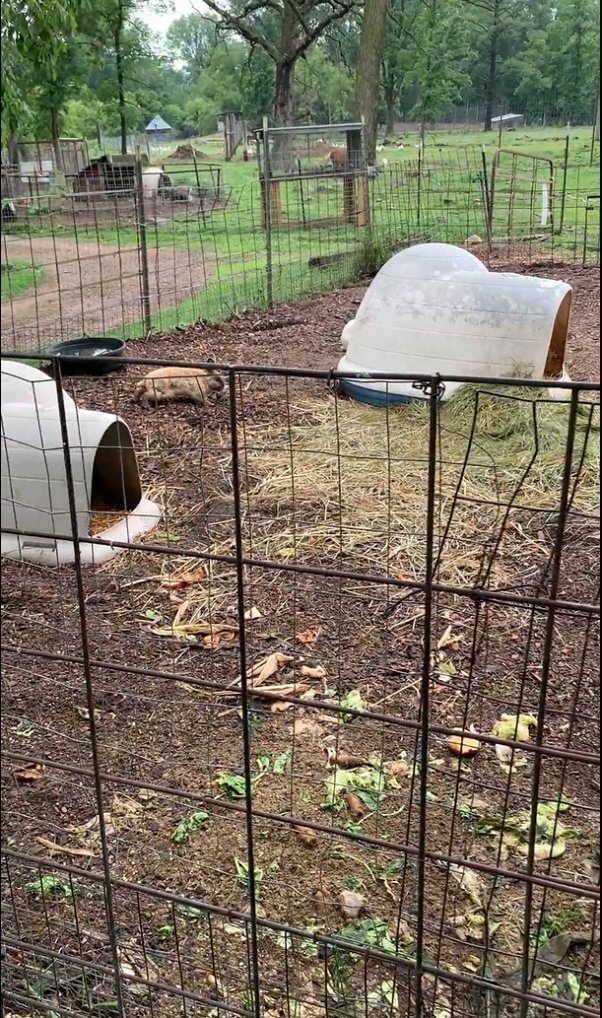
- Maintain rabbit enclosures in good repair (One pen was found to have loose wire mesh with points sticking out, and a hutch had protruding screws—both of which posed a risk of injury to the rabbits.)
- Maintain other enclosures in good repair (There were two holes in the wire mesh inside the white tiger’s den with exposed sharp points that posed a risk of injury to the tiger; a 12-inch-by-6-inch hole in a metal panel within the juvenile tigers’ enclosure with sharp points that imperiled the tigers; bent, broken, or exposed wire fencing with sharp points in the brown bear, camel, leopard, and muntjac enclosures; a large hole with loose wires in a deer enclosure gate; bent, leaning, and disconnected fencing in another deer enclosure; a leaning support post between the bison and wolf enclosures; an improperly repaired hole in the prairie dog enclosure through which four animals escaped; a hole in the bottom of the bison fence “where the bull reportedly pushed against it”; a 20-inch-by-16-inch area washed out under the sika deer enclosure fence; and fencing damaged by fallen branches in a sheep enclosure—an issue Animal Haven Zoo has been cited for twice since PETA first reported it to the feds in July 2021.)
- Provide a sufficient barrier between animals and the public, as the inspector noted an area of the kangaroo enclosure where guests could approach the primary fence and possibly touch the kangaroos
- Remove excess feces from the perch in the snow macaque enclosure
- Protect animal food from contamination, as mice and droppings were found in the produce storage area and around the dry bear feed
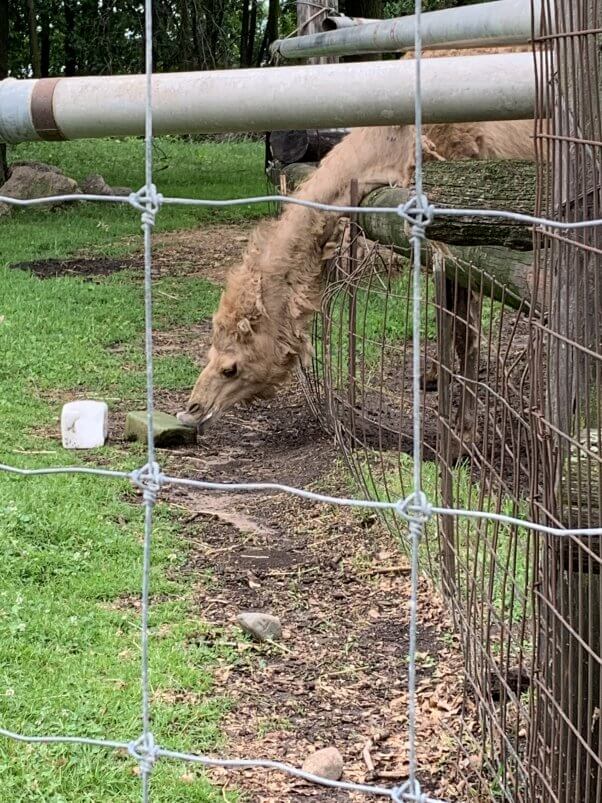
Animal Haven Zoo’s Poor Track Record
The USDA has previously cited Animal Haven Zoo for failing to provide adequate veterinary care to an alpaca who was suffering from a large wound on his leg, which the facility said had been caused by shearing clippers two weeks prior, and failing to provide eight sheep with shelter from inclement weather.
In addition, the facility has acquired big cats from shady dealers such as “Joe Exotic” and confines them and other animals to paltry, dilapidated cages with no enrichment and where they’ve been observed pacing—a sign of psychological distress.
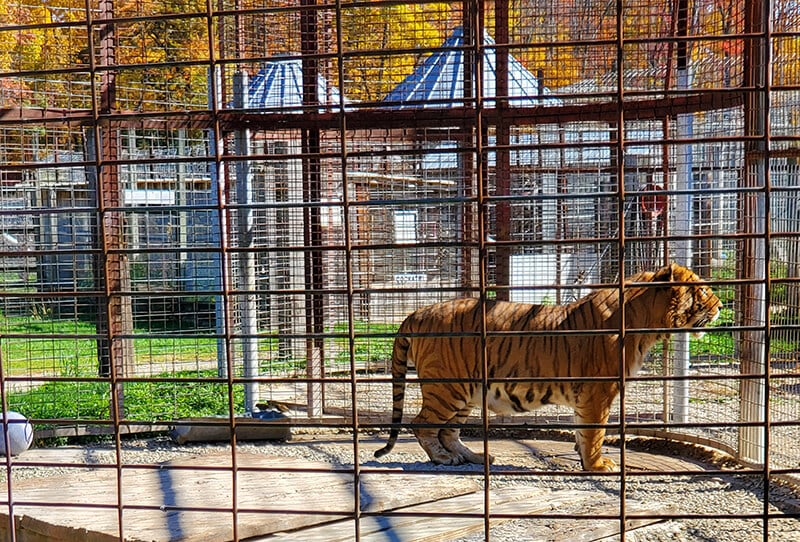
What You Can Do for Rabbits, Tigers, Pigs, and Others
Never buy a ticket to Animal Haven Zoo or any other roadside zoo where animals languish in miserable conditions. Then, share this post to let your friends, family members, and social media followers know why they should do the same.
Want to do more?
Please urge Animal Haven Zoo to send the animals it exploits to reputable facilities where they can finally get the care that they desperately need.

